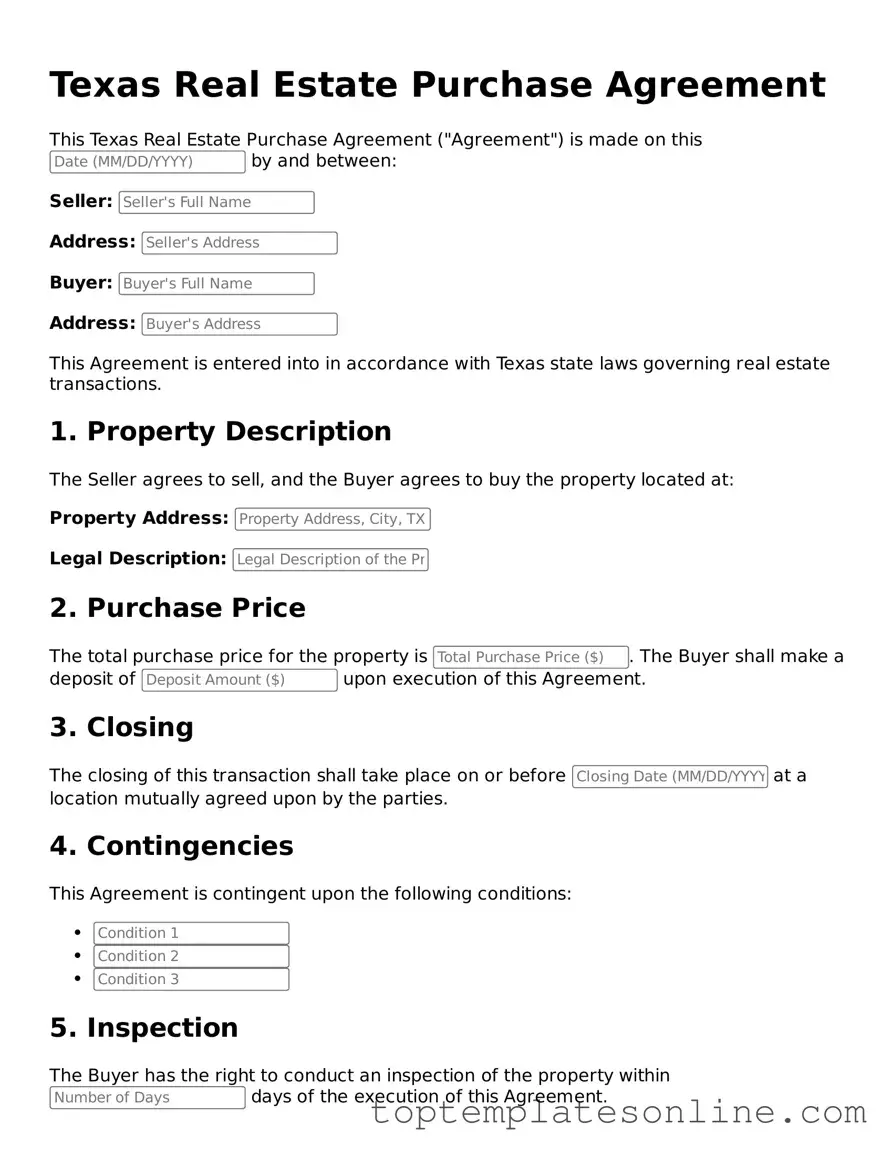Blank Real Estate Purchase Agreement Template for Texas State
The Texas Real Estate Purchase Agreement is a legal document that outlines the terms and conditions of a real estate transaction in Texas. This form serves as a binding contract between the buyer and seller, detailing the property specifics, purchase price, and other essential elements of the sale. Understanding this agreement is crucial for anyone involved in a property transaction in the Lone Star State.
Customize Real Estate Purchase Agreement Here
